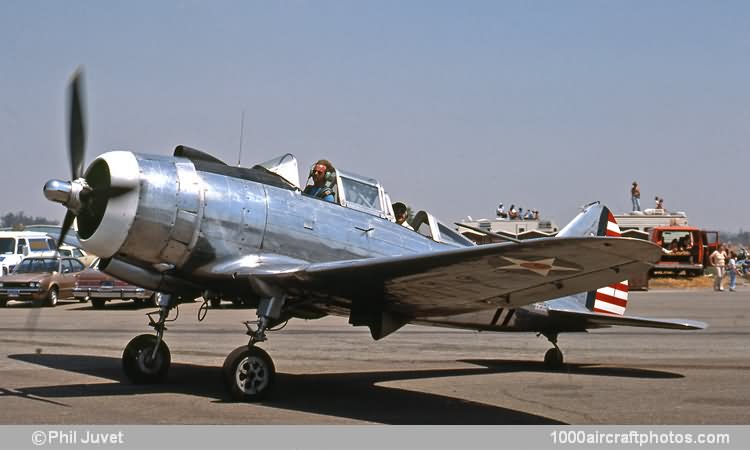07/31/2011. Remarks by Johan Visschedijk: "Evolved in parallel with the P-35, the 2PA was a two-seat fighter and fighter-bomber with a fundamentally similar airframe and offered with either a similar landing gear to that of the single-seater as the 2PA-L (Land) or with an amphibious float landing gear as the 2PA-A (Amphibian). Dubbed 'Convoy Fighter' by the manufacturer, the 2PA was powered by a Wright R-1820-G2 or G3 Cyclone nine-cylinder radial engine, the former rated at 1,000 hp for take off and the latter at 875 hp.
Armament comprised two wing-mounted 0.30 in (7.62-mm) or 0.50 in (12.7 mm) Browning guns, one 0.30 in Browning on a flexible mount in the rear cockpit, plus two forward-firing fuselage-mounted 0.30 in or 0.50 in Browning guns. Provision was made for a bomb load of up to 500 lb (227 kg) on internal wing racks.
Early in 1939, Major Seversky embarked upon a European sales tour in a 2PA-202 or 2PA-BX which was fitted with a 1,100 hp Pratt & Whitney R-1830-S3C Twin Wasp. This aircraft was tested at the A&AEE Martlesham Heath, UK in March 1939, at the instigation of the Air Ministry. One 2PA-A and one 2PA-L were procured by the Soviet Union in March 1938, together with a manufacturing license, which, in the event, was not to be utilized.
Twenty R-1820-G2-powered examples were ordered clandestinely by the Japanese Imperial Navy for use over China as long-range escort fighters. Designated 2PA-B3, these received an armament of two fuselage-mounted 0.30 in machine guns and a similar weapon in the rear cockpit. Assigned the Japanese designation A8V1, the 2PAs were found to possess unacceptable levels of maneuverability and climb rate for the escort fighter role and were therefore relegated to reconnaissance missions in Central China, two later being passed to the Asahi Shimbun newspaper group.
Fitted with an 1,050 hp R-1830-45, 55 2PA-BXs were ordered by Sweden as fighter-bombers (the Seversky company having meanwhile become the Republic Aviation Corporation), but only two of these were delivered to Sweden, and although the USAAC had no operational requirement for the type it acquired the remainder when exports were blocked early in WW II. Under the designation AT-12 Guardsman and serialed 41-17494 to 41-17543, they were used as advanced trainers and fast personnel transports. Most were phased out and scrapped during the war, reportedly two survived.
Ex-USAAF 41-17529 came on the civil registry as NX55539 and served during some time in Latin America where it was employed as a mapping airplane. Subsequently it was registered in El Salvador as YS-114, owned by Archie Baldocchi. It was returned to the USA during the 1950s, again registered as NX55539, and eventually made its way to the collection owned by Ed Maloney, which eventually became the Planes of Fame Museum, where it is preserved in airworthy condition.
The other example was registered as NX55811. Sponsored by the actor Buddy Rogers, and named after the comic strip character Buck Rogers, it was listed as Racer number '61'. Flown by Vincent Perron, the aircraft was entered as a 'Super P-35' in the 1949 Bendix Trophy cross-country speed contest. It was withdrawn at Grand Junction, Colorado, due to continuing engine problems."
